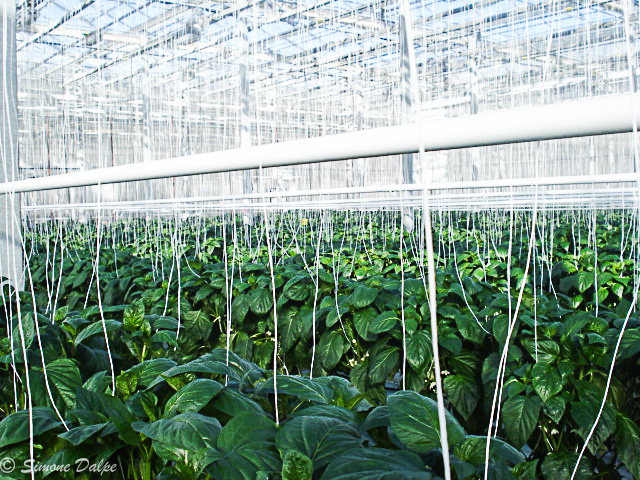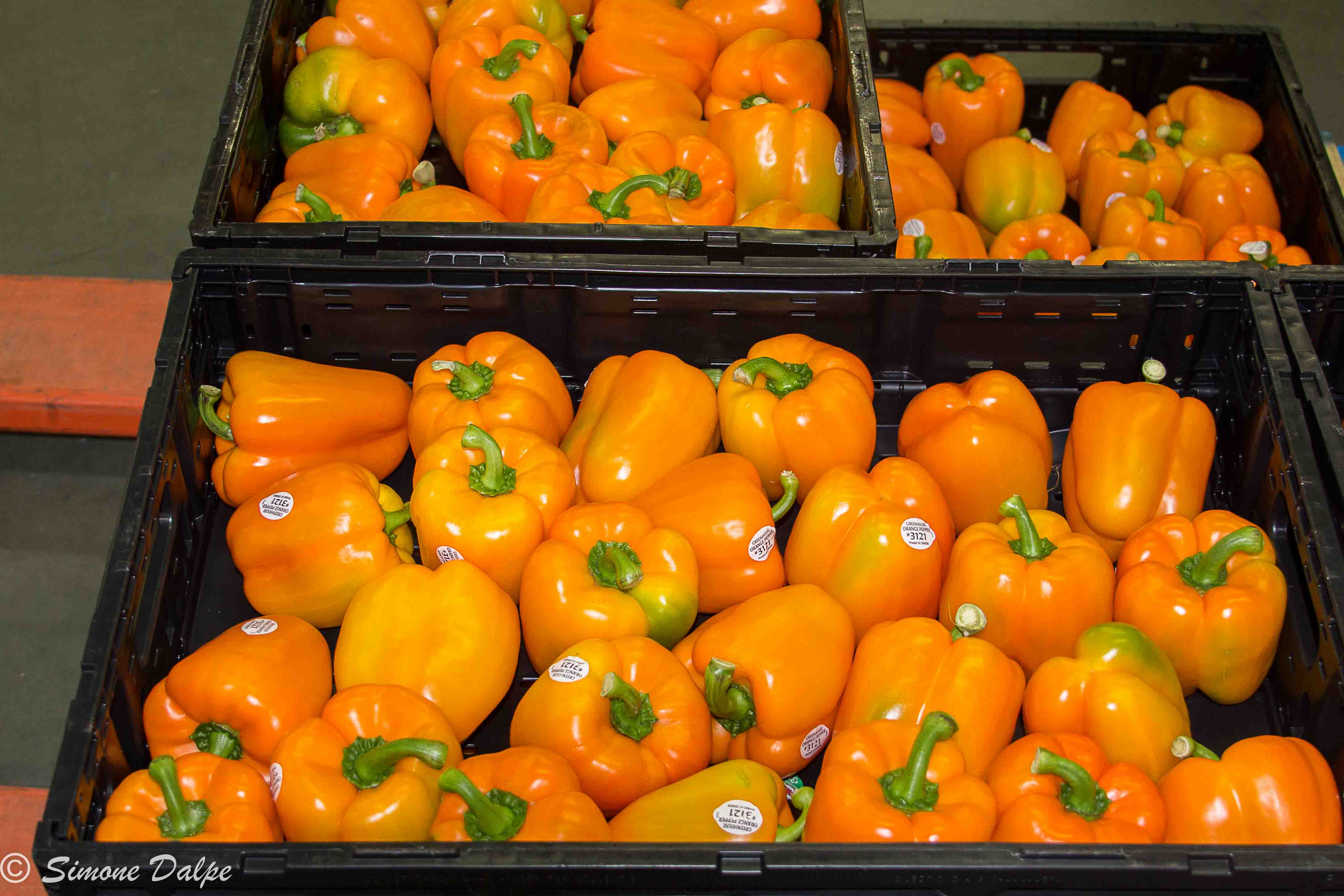| | Sweet bell peppers | Table of contents | Important notice | Acknowledgements
A greenhouse is a controllable dynamic system (Seginer 1996), managed for intensive production of high quality, fresh market produce. Greenhouse production allows for crop production under very diverse conditions (Gauthier 1992). However, there are a number of variables that greenhouse growers have to manage in order to obtain maximum sustainable production from their crops. These variables include; air temperature, root zone temperature, vapour pressure deficit, fertilizer feed, carbon dioxide enrichment, selection of growing media, and plant maintenance. The task of managing these inter-related variables simultaneously can appear overwhelming, however, there are successful strategies that are used by growers to do this. The main approach is to try to optimize these variables to obtain maximum performance from the crop over the production season.
The goal of optimization can be used to determine how to control these variables in the greenhouse for maximum yield and profit, taking into account the costs of operation and increased value under the modified environment (Jones et al 1991). The greenhouse system is complex; to simplify the decision-making process growers use indicators. An indicator can be thought of as a small window to a bigger world, you don't get the entire picture, but you do gain an understanding of what is happening. Another way to look at it is to understand the basic rules of thumb which can be used to obtain insights on the direction and dynamics of the crop-environment interaction.
Indicators provide information concerning complex systems in order to make them more easily understandable (Giradin et al 1999). They quickly reveal changes in the greenhouse which may require alterations in management strategies. Indicators also help identify the specific changes in crop management that need to be made. The purpose of this manual is to provide information regarding the greenhouse management, and the resultant response of the sweet bell pepper plant as individuals within the larger crop. Basic indicators used to evaluate the plant-environment interaction to move towards optimization of the environment and crop performance are presented. Over time, and with experience, growers will be able to build on these basic indicators to improve their ability to respond to changes in the crop and to anticipate the needs of the crop.
Sweet Bell Peppers
Bell peppers (Capsicum annum L.) originate from central and south America where numerous species were used centuries before Columbus landed on the continent (Manrique 1993). The cultivation of peppers spread throughout Europe and Asia after the 1500's. Although perennials, they grow as annuals in temperate climates. They are sensitive to low temperatures and are relatively slow to establish. As there is little field production of bell peppers in Alberta, greenhouse production provides most of the local source of this product. Greenhouse production of peppers is based on indeterminate cultivars in which the plants continually develop and grow from new meristems that produce new stems, leaves, flowers and fruit. In comparison, field pepper cultivars are determinate, the plant grows to a certain size, produces fruit and stops growing and eventually dies. Indeterminate cultivars require constant pruning to manage their growth. In order to optimize yield, a balance between vegetative (leaves and stems) and generative (flowers and fruit) growth must be established and maintained.

Figure 1. Canopy of a healthy greenhouse sweet bell pepper crop.
Greenhouse pepper production is based on a year long production cycle. Typically, seeding occurs in early to mid October, plants are moved from the nursery into the production greenhouses six weeks later, just before Christmas. Harvest begins in late March and continues through to the following November. It takes roughly four months from seeding to first pick.

Figure 2 . Basket of orange sweet bell peppers ready for market.
Table of Contents
- Diseases of sweet pepper
- Fungal diseases
- Damping-off
- Pythium crown and root rot
- Fusarium stem and fruit rot
- Gray mold
- Powdery mildew
- Virus diseases
- Pepper mild mottle virus
- Tobacco mosaic virus
- Tomato spotted wilt virus
- Tomato mosaic virus
- Physiological Disorders
- Blossom end rot
- Sunscald
- Fruit cracks
- Fruit splitting
- Fruit spots
- Misshapen fruit
- Internal growths in the fruit
- Appendices
Important Notice
This guide is intended for commercial growers in Alberta, and is based on the most recent recommendations for greenhouse sweet pepper production. As each greenhouse is unique, growers should adapt the information to their operations. Specific climate recommendations are to be used only as a guide.
Acknowledgements
The author wishes to give special recognition to Pat Cote and Scott Graham, the other members of the Greenhouse Crops Team at the Crop Diversification Centre South in Brooks, whose technical expertise in greenhouse sweet pepper production in Alberta forms the basis for specific cultural recommendations.
To the many reviewers who provided critical input:
Ms. Shelley Barkley, Crop Diversification Centre South, AAFRD.
Mr. Donald Elliot, Applied Bio-nomics Ltd.
Ms. Janet Feddes-Calpas, Crop Diversification Centre South, AAFRD.
Mr. Jim and Mrs. Lynn Fink, J.L. Covered Gardens.
Dr. M. Mirza, Crop Diversification Centre North, AAFRD.
This manual was submitted in fulfillment of the course requirements for AFNS 602 (Graduate Reading Project, as part of the requirements of the Ph.D. program at the University of Alberta supervised by Dr. J.P. Tewari.
|
|